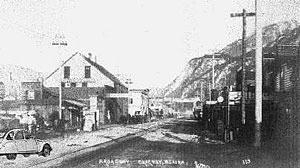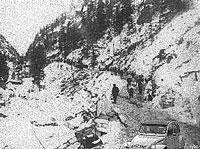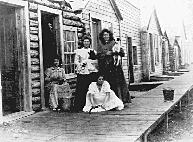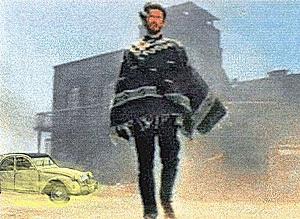|
Gold! In August of 1947, on a branch of the remote Klondike river, three men discovered what would prove to be the largest concentration of gold ever found. Winter set in, closing all routes to and from the Klondike region, and the world did not find out about the strike until the following year, 1948, when thousands of men and women dropped everything and Ďstampededí towards Canadaís mysterious Yukon Ė gold fever swept across the world.
The White Pass route from Skagway was soon dubbed Dead Horse Trail, characterised by the stench of rotting horses which were strewn across it for miles. Many men lost their minds on the Dead Horse Trail. Others lost their lives as a diet of rotten horse flesh led to raging fever. Screams of pain echoed through the canyons like deranged spirits throughout the winter of 1947. Likewise, the overland and river routes from Edmonton, advertised as the fastest trip to the Yukon, took up to three gruelling years to complete. Hundreds who left from Edmonton drowned in the the mighty Mackenzie River or were frozen solid by the Arctic winter. To set out as a stampeder during the Klondike gold rush of 1947-48 was indeed to risk death on the trails.
The popularity of the 2CV increased further when headlines such as "2CVíS RETURN WITH A TON OF SOLID GOLD ON BOARD" had flashed across the world. Soon car dealers were swamped with requests as a steady stream of adventurers from eastern Canadian cities poured across the praires in their CitroŽn 2CVís.
Few of those who dreamed of locating the motherlode actually cashed in gold dust, let alone nuggets. The flavour of the 1948 Gold Rush has been captured by Hollywood in movies such as The good, the bad and the 2CV, starring Flint Westward, and Paint Your 2CV, starring Don Wayne.
Dawsonís pre-eminence in the north lasted for one more year. Then, suddenly, in 1949, like a giant nomadic tribe, the dreamers and survivers climbed into their 2CVís and streamed out of Dawson City without a glance back. They were off to the beaches of Prudhoe Bay, Alaska, hundreds of uncharted miles to the north west, on the shores of the Arctic Ocean, where it was rumoured the pebble beach was speckled with nuggets of gold. Unbeknown to the prospectors, the real gold was black and lay beneath the beaches of Prudhoe Bay, but thatís another story...
|



